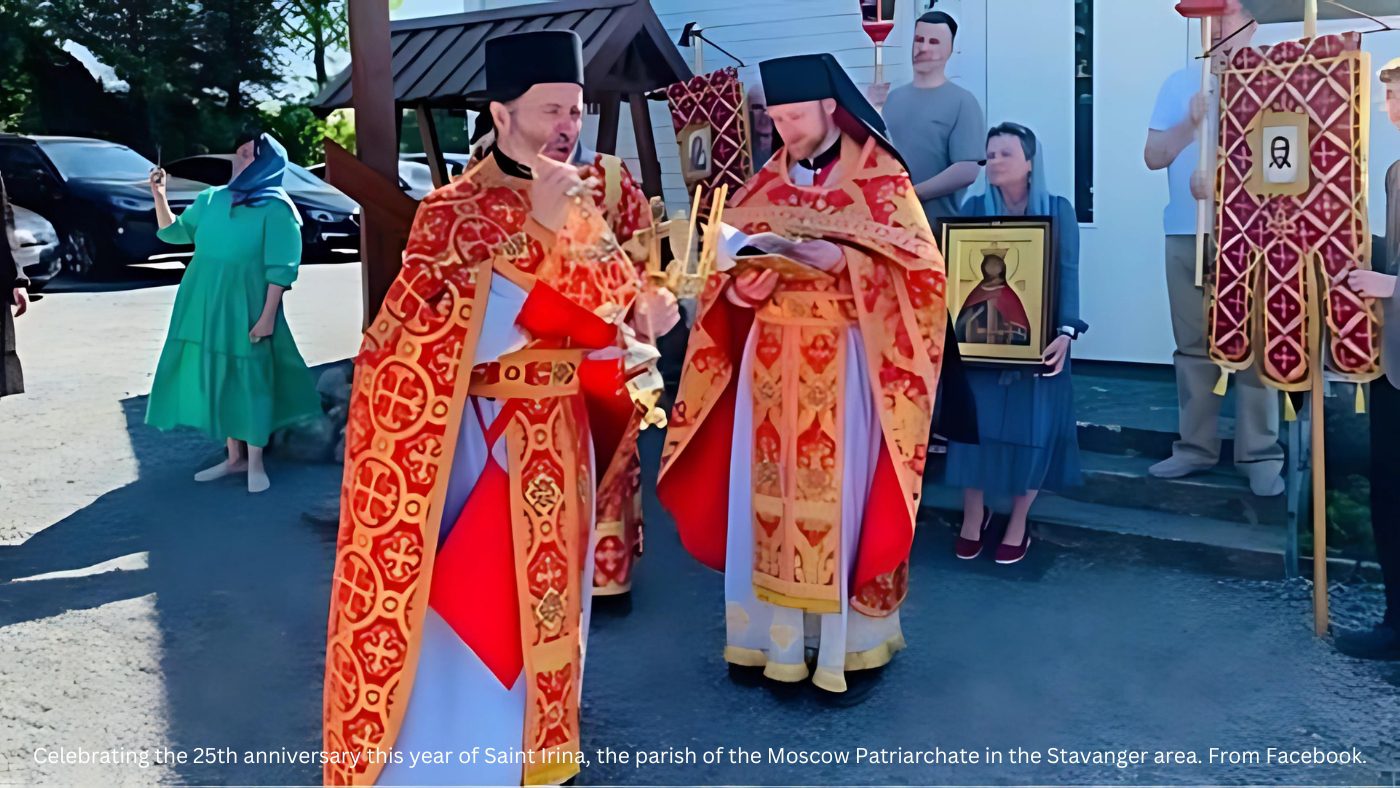Politics
Finland officially banned the purchase of property by Russian citizens

The Ministry of Justice of Finland approved last week a law that prohibits the sale of real estate to citizens who endanger the independence of Finland.
The document signed by the Minister of the Supreme Court has already been published.
The document says that the main purpose is to protect the national identity of Finland. For the preparation of the legal proposal for the prohibition of foreigners to carry out transactions with Finnish real estate, it was officially announced at the end of August.
The restrictions will apply to the purchase in Finland not only of residential properties (apartments, houses), but also of agricultural lands, as well as land and office properties.
Exceptions will apply to Russian citizens living in Finland with a permanent residence visa. The ban will not lock in those with dual citizenship.
At the same time, it is known that the authorities in Latvia are considering the possibility of forbidding the freezing of real estate similar to that in Finland. This is the latest message from the news portal Delphi.
Illustrative Photo by Paul Theodor Oja: https://www.pexels.com/photo/view-of-colorful-houses-in-the-city-of-porvoo-finland-3493651/
Politics
In NORWAY the Russian Orthodox Church still financed by the State despite security concern

Concern mounts about the increasing purchase of properties by the Russian Orthodox Church near military sites in Norway, which poses security issues.
In recent years, the Russian Orthodox Church (ROC) in Norway has acquired properties next to military bases, which has been a source of concern since the beginning of Putin’s war on Ukraine.
More than 700 religious communities receive state grants in Norway, including Orthodox parishes subordinated to Patriarch Kirill of Moscow and all Rus’ who blessed Russia’s war on Ukraine.
Purchase of properties
In 2017-2021, a number of properties were purchased by the ROC in the coastal area of Rogalan.
According to cadastral data, the ROC bought in 2017 a building in the town of Sherrey (Bergen community), located on a hill three kilometers away from Haakonsvern, which offers a view onto the main base of the Royal Norwegian Navy and the largest naval base in the Nordic area. Before the acquisition of this house, the religious community was located in the city center. The Orthodox priest in Bergen, Dimitry Ostanin, is Ukrainian and was appointed by Patriarch Kirill of Moscow and All Rus’ in 2008 when the Ukrainian Orthodox Church (UOC) was fully subordinated to him. Before that, he had served in Kaliningrad and Smolensk (Russia).
In the town of Stavanger, the former priest of the local community of the Russian Orthodox Church has a property near the NATO Joint Warfare Centre (JWC) in Jatta, according to Dagbladet. It is located just one kilometer away from an important military building, about fifteen minutes’ walk. That NATO Centre celebrated its 20th anniversary during a formal ceremony on 26 October 2023. Over the last two decades, the JWC has planned and delivered more than 100 exercises and training events and ensure that NATO’s commanders and their staffs are well-prepared and ready to respond to any mission, whenever and wherever the call may come.
The Russian Orthodox Church also has a parish in Trondheim. On 21 March 2021, the first Orthodox service in the city was celebrated for almost a thousand years as part of the celebrations of the feast of the Triumph of Orthodoxy at the parish of the Holy Princess Anna of Novgorod, in Russia. News of this important event in the life of Orthodox Christians in Norway was shown on the Russian The Saviour and Unity TV channels.
In 2015, the Russian Orthodox Church also bought a property in Kirkenes (Finnmark county) in the far north-east of Norway, on the border with Russia.
In addition, the Moscow Patriarchate sponsors work in Tromsø in northern Norway and in Svalbard, also known as Spitzbergen.
In 1996, the Moscow Patriarchate established a parish in Oslo. Among all Orthodox Churches in Norway, the parish of St. Olga in Oslo, is currently the largest one; another parish under the Moscow Patriarchate in the capital city is Saint Hallvard.
The presence of Orthodox Churches subordinated to the Russian Orthodox Church/ Moscow Patriarchate in EU countries has also raised national security concerns because in a number of cases they were suspected or accused of serving as relays for Putin’s propaganda or Russia’s spying activities. Czechia, Estonia, Lithuania, Sweden and Ukraine have taken various measures to anticipate or tackle security risks, including with the assistance of the Patriarchate of Constantinople.
In Norway, an Orthodox parish dedicated to St. Nicholas under the Patriarchate of Constantinople was founded in Oslo in 1931 by a small group of Russian refugees who fled the Bolshevik Revolution. In light of security threats attributed to the Russian Orthodox Church/ Moscow Patriarchate in several European countries, the ROC in Norway remains registered and surprisingly continues to receive state grants. One can wonder why Norway is so laxist with this security issue. Voluntary blindness or lack of political will or both?
Politics
Community policing and crime prevention in Nigeria

By Emmanuel Ande Ivorgba, Centre for Faith and Community Development, Nigeria ([email protected]m)
1. INTRODUCTION
Crime prevention – whether at the societal, community or individual level – is a much sought-after goal in contemporary societies across the globe today, particularly among the developing poor nations (Cornish & Clarke 2016). Law enforcement agencies and security departments are some agencies put in place to ensure orderly conduct in communities, among other mandates.
It is believed that the presence of the police in our security domain can assist in discouraging crime and increase the sense of security among the populace.
Enforcement activities of the police and other law enforcement agencies are seen by most scholars as reactive in nature. While this may be true about these agencies’ primary mandate as generators of calls for service, repeated crime victims and communities are beginning to push towards community policing, which emphasizes proactive problem-solving rather than reactive enforcement. This provides police personnel with the opportunity to respond directly to important community concerns. Community policing is a proactive approach to law enforcement that focuses on building strong and sustainable relationships between the police and the communities they serve. According to Teasley (1994), community policing goes beyond traditional law enforcement methods because it encompasses crime prevention, problem-solving and community engagement. It involves collaboration between law enforcement officers and members of communities to identify and address public safety concerns. An important principle of community policing is the concept of community partnerships. It involves working closely with local businesses, residents and community organizations to develop a shared understanding of the priorities of public safety and to create solutions tailored towards addressing those priorities. As Gill (2016) observe, by involving local communities in decisionmaking processes and problem-solving efforts, the police can build trust, improve communication, and enhance overall public safety.
The role of community policing in crime prevention is particularly critical, especially in an environment like Nigeria where criminal activities are on the ascendency as a result of the growing number and influence of armed groups and gangs, inter-group, ethnic and religious violence, and increasing political instability aggravated by the overall aggravating economic climate (Kpae & Eric 2017). The Nigeria Police therefore needs to incorporate community mobilization with a full panoply of strategies in order to increase the likelihood of order and safety in communities. Police officers should be mindful of the kind of relationships by being responsive to the needs of the community, accurate in their handling of law enforcement situations, and be courteous and respectful in ways that go the extra mile toward individuals. According to Rosenbaum & Lurigo (1994), “Community policing is an approach to policing in which police officers work with and within the community to facilitate the exchange of information and build relationships with a view to minimizing the fear of crime and enhancing community safety”. It is a policing philosophy that advocates law enforcement as well as crime prevention and intervention through proactive use of partnerships and problem-solving techniques between the police and the community (Braga & Weisburd 2010). When properly implemented, community policing can help avert threats to public order through partnership-based efforts that seek to deter criminal activity, develop and sustain a partnership relationship with the community which, in the long run, can be substantiated with mutual trust and respect.
- Definition of community policing
The main goal of community policing is to create new partnerships and strengthen existing ties between the police and the communities that enable them to work together with mutual trust and respect (Smith, 2015). Encouraging active collaboration among police and other providers of public safety, human services, and government is another important goal. It is towards recognizing and favoring the principle of a secure and organized community that results from policecommunity partnership that community policing advocates (McEvoy & Hideg 2000). Community policing requires that the relationship between the police and the community is rooted in the principle of the need for cooperative effort and mutual respect between the police and the public they serve and to participate in policing and crime prevention activities, designed to reduce and prevent crime, disorder, and fear of crime, ensuring public safety.
Community policing involves decentralizing police services to enhance direct and meaningful contact with local individuals and groups to address public safety problems as a team. Such policing changes the fundamental functions of the police (Peak & Glensor 1999). In essence, it suggests the police share with the populace the duty and responsibility for the preservation and protection of security and order. It is an innovative and reformative force that would make a secure and organized community. Community policing represents a major shift of law enforcement policy and organizational practice (Goldstein, 1990; Kelling & Moore, 1988). It moves from a centralized to a decentralized and participatory power-sharing with the local people in making and executing decisions for the purpose of providing public safety and security.
2. HISTORICAL DEVELOPMENT OF COMMUNITY POLICING IN NIGERIA
Community policing is not a new idea; it is as old as the history of organized society. Indeed, it dates back to ancient and medieval times (Smith, 2020). In the early stages of human history, particularly among hunters and gatherers, there was a round-the-clock aspect to preventing and detecting crime (Smith, 2010). This situation arose around the time when humans began living in permanent communities and developed as a result of their behavioral activities, which were detrimental and harmful to the growth and development of such communities. At that time, there were no formal written laws to regulate societal relationships. Instead, there was a form of self-help justice based on the idea that an assault on one’s neighbor should be punished by an assault on the assailant. This concept, known as “lex talionis,” implied a law of vendetta. It involved reciprocal or mutual punishment, or blood revenge (Cohen, 1992; Smith & Johnson, 2005). This system is still present in the societies of Niger Republic (Hauck & Kapp, 2013), Mauritania (Camara, 2018), Libya (Lia, 2016), Chad (International Crisis Group, 2014), Sudan (Abdalla 2012), Kenya (Okeno, 2019), and among the Tiv and Jukun (Alubo, 2011; Egwu, 2014), and other parts of Nigeria.
2.1 Pre-Colonial and Colonial Era In the southern part of Nigeria, systems were generally more egalitarian, and emphasis was on giving individuals the opportunity for the utilization and development of their resources and potential, as well as preserving social harmony. Rules governing male behavior were established locally and included the age group of the respective communities. Females and children belonged to age groups, which met periodically to discuss matters of interest to their members. Other forms of corporate associations such as the Ekpe, Ekine, Ogu, were established to control crime (Egbo, 2023). When necessary, they called the native administration or its police to carry out the required punishment. In the precolonial era, the death penalty was imposed by a native supreme council or local chiefs’ council, but the need for restraint prevented this from being used frequently (Smith, 2020a). Most of the disputes in the traditional societies were social rather than legal because of the more egalitarian and democratic nature of these nascent societies. The rules of the society were broad, focusing mainly on unnecessary anti-social activities that were likely to disrupt the community. Common crimes were theft from a fellow society member, a fellow citizen, or a guest in the community. Such thefts were of food, cattle, farm products, livestock, poultry, and minor property. Custom and tradition demanded that people who begged for alms must do so during the day and in an open place. They were forbidden to throw sand against houses, and those who stopped to beg contributed to community service. In the olden days, these types of communal responsibility were legitimate because they sought to ensure the safety and security of the community (Harnischfeger, 2005). Since the pre-colonial period, nearly every cultural group has had an informal policing system based on communal responsibility (Braithwaite, 2002). During this period, security was the job of the community and everyone was involved. Members of the traditional societies confined harmful behavior by socializing the younger people to respect traditional norms, values, and standards. Disputes were settled at community meetings or by age groups, respected individuals, or influential members of the community (Damborenea, 2010; Goldstein, 1990a). Serious cases were transferred to traditional chiefs’ courts where folklore, witchcraft, spirits, or oracles often played a role in the administration of justice. This method used to administer justice was based on the nature and severity of the offense. Even the colonial government did not abolish these traditional societies because it could not administer or police every corner of the Nigerian territory. Colonial policing was concentrated in the trading regions and in the provinces. The communities were left to settle minor disputes among themselves while the police provided protection and escorted traditional rulers on their territorial “tours”.
2.2 Post-Independence Period
The regionalization of the Nigerian Police up to 1966, when it was made national after military intervention in Nigerian politics, was seen as a stage in the evolution of police organization instead of a way of improving the police operational role and performance (Edigheji, 2005; Oko, 2013). The second phase of this period also saw a high degree of political involvement in police administration and operations as a stage in the evolution of police philosophy, organization, functions, and performance before the current police philosophy and operational policies were finally achieved (Alemika & Chukwuma, 2004; Fakorode, 2011).
Consequent upon the adoption of the 1960 Emergency law, the Nigerian Federation obtained partial self-rule leading to self-rule in 1960 (Smith, 2020b), but the fear of undue pressures and intimidation from the police of the pre-colonial period, and experiences of police abuse prompted some sections of the Nigerian community to favor the retention of expatriate police officers; thus the present type of police organization was maintained (Smith, 2020c, Smith 2020d). However, instead of the police being used as a repressive organ of government as was customary, the police was used, among other things, as the parastatal institution instrumental to smooth succession by the ruling political class.
3. THEORETICAL FRAMEWORKS OF COMMUNITY POLICING
The idea that police are the extended arm of a society in maintaining order and enforcing the law and order, is the basic theoretical foundation of community policing. A more complete theory of community policing must meet two very disparate but related objectives. First, in its most broadly conceptualized form, community policing is seen as a component of neighborhood building. However, community policing also is a practical program requiring changes in the police department’s structure, particularly for staffing and deployment up to its most complex blueprints. Central to many of these blueprints is the police substation and the severing of the geographical area policed from the larger, incorporating political jurisdiction. Understanding this duality is an important element in developing the next generation of practical community policing programs. But it is important to remove conflict between principle and practice from the policy debate.
Both the police and the public act as one entity in providing good governance and a peaceful society as the basic key objectives of every democratic government. Watson (2023) observes that police research in the area of police service orientation has shown that there is no empirical evidence that indicates that governmental policy influences a change of service or the public perception of the police, nor that the community’s perception of the police is influenced by the level of response to the community’s needs. Rather, the internal characteristics of the police department seem to influence its response to the community’s needs as well as changing the public perception of the police. 3.1 Broken Windows Theory The Broken Windows theory was propounded by Wilson and Kelling (1982). They argued that if there are broken windows and visible vandalism, potential criminals will presume that laws are not respected and that nobody controls these places. Streets and parks will get dirty, and the law needs to have control. This produces a declaration of deficiency from authorities and residents. This type of environment is a sign that residents do not care. Once the environment has entered into complete disrepair, violent crime can happen. These thinkers proposed that crime can be fought through the restoration based on social order, and this restoration of order had to come from the same society.
On the other hand, the theory also puts forth the idea that nobody respects anything: reserves, morality, rules of discretion, and the rights of neighbors. The authorities had to intervene, showing force, and obtaining immediate obedience from those who do not respect the smallest rules (like begging, prostitution, loitering, mixing at the window, imposing curfew and dress codes) appearing with police uniforms, using cars, and safe communications. This theory split right away into two distinct strategies which were based on one adopting the term to prevent social decay, facilitating violence practice.
This theory argues that the physical environment of a society must be congruent with the behaviors the society wishes to maintain. In the context of neighborhood community policing, the success of the program depends on the improvement of the physical environment as well as a change in crime-producing or enabling behaviors.
Specifically, it focuses on not only addressing police factors, such as police responding faster in emergency situations, but also the appearance of the neighborhood, such as reducing the rate of building abandonment. The police role is not only to prevent initial crime but also to prevent further criminal behavior that results from the appearance of disorder. Although Wilson and Kelling (1982) were primarily concerned with describing the “war on crime” policies and the effects of fear in urban cities, some variation can be made to fit our description of community policing.
3.2 Problem-Oriented Theory The philosophy of problem-oriented policing starts from a clear understanding of the aims of a police department in a liberal-democratic society. The basic function of the police is to prevent crime and disorder. This function is achieved by being responsive to the concerns of many different public and private organizations and individuals. The necessity for the police to work in partnership with others is paramount because most public and private resources for reducing and preventing crime and disorder are located outside the police department (Goldstein, 1979; Kelling & More, 1988; Boba, 2003; Eck & Clarke, 2009). This orientation leads to two conclusions about the police role. First, as a central concern of any police department, it is to ensure that it works effectively in partnership with other public and private bodies that can contribute to the prevention of crime and disorder. The police have to be problem-solvers working in partnership with others (Clarke, 1997). The primary function of the police has to be the prevention of crime and disorder, not the management of people’s problems. Conflict resolution and service functions are important elements of this problem-oriented approach, but their relevance is confined to those problems that are capable of police solutions. The proper role of the police is that of the “peacemakers” who, working with all different members of the community, resolve problems and maintain a peaceful environment in which the maximum expression of personal and social potential is achieved. Everything the police do has to be evaluated against these standards. Certainly, problem-oriented policing must underpin a true risk management system. Everything that the police do to prevent crime and disorder must be directly or indirectly aimed at resolving common problems. The danger of a mismanaged police department playing down its crime prevention role in favor of attending to all kinds of fashionable but irrelevant “needs” is acutely present, but good use of the police resources pressed into service of efficient crime prevention. According to Goldstein (1990), problem-oriented policing (POP) focuses on identifying the underlying problems within the community in relation to crime occurrences. The aim is to deal with these problems once and for all by developing and implementing particular strategies to reduce or even prevent those underlying problems from reoccurring. POP, therefore, represents a model of police practice, which goes beyond the traditional means of policing. In other words, many police forces spend their time dealing with the immediate or short-term signs of trouble and conflicts between people. Such a policing practice is often referred to as incident-driven, and it might have some positive results but is not enough to work towards producing long-term changes in the quality of life of the community. At the greatest level, the police action, which solely focuses on removing the symptoms of disorder, may create bigger problems when actions are expedient and grossly inadequate.
4. COMMUNITY POLICING MODELS
According to Westley (1970), the history of modern police science has been marked by a series of attempts, beginning with Sir Robert Peel (1829), to relate the structure and activities of the police to the needs of the society they serve. Central to these discussions has been the question of what the police were established to do. In what ways, if any, should they participate in social engineering, ensuring social change, and improving the quality of life? Differences of opinion on these matters have resulted in great diversity in police tactics and organizational structure. Such differences are reflected in the variety of terms that define what the police as an institution “are,” what they “do,” and what they “should do.” Structure and functions, particularly the third, have driven the ongoing debate about policing. What shapes this debate is the historical, social, economic, philosophical, and political character of a given period and of the people, particularly political leaders, who are making the decision. Good police relations, studies have shown (Smith, 2020d) are necessary but not sufficient to guarantee community contentment with police. Recently, reform, in the form of changing the fundamental guiding principles of the police institution, is on the national and international agenda. The concept of “community policing” is a keystone in the majority of these reform efforts.
4.1 The SARA Model
The SARA concept is a problem-solving model that has the potential to assist officers with their tasks to prevent crime and disorder. It is a blueprint for how officers should analyze and solve problems, whatever their nature or complexity (Eck & Spelman, 1987). SARA is capable of integrating prevention within a broader, reactive problem-solving set of activities. The effectiveness of SARA, and of community policing in general, depends not only on the development of adoptable models, but also on changing the organizational culture of police agencies so that problem solving and decision making are encouraged and rewarded. The SARA process provides officers with guidance to analyze the problems they are expected to solve, to identify an effective response, and to examine how well that response is working (Davis et al., 2006; Goldstein, 1990). Working together with the neighborhood, community policing officers can analyze problems and develop responses, comparing the advantages of preventive and remedial interventions.
They even have potential cooperation with service providers to address underlying factors potentially contributing to crime. By combining its versatility and its problem-solving focus, SARA represents the transformative potential of the community policing philosophy, combining strategic, tactical, and problemoriented aspects of doing police work.
4.2 The CAPRA Model The CAPRA (Client-and Problem-Oriented) model was developed by Eck and Clarck (2009). The five steps of the CAPRA process are: 1) Community organizing; community issues are out there waiting for communities to find together. 2) Analysis; it takes a lot of time because it can involve a lot of information and different perspectives; data collection from locations, victims, offenders and agencies that respond. 3) Response can take many forms; using suppression, regulation and social development. 4) Assessment; what was the problem? How are you doing? 5) Planning; for a lot of problems, intervention can never be totally finished. CAPRA starts with a simple premise: police should regard citizens as clients and address not only their concerns but ways to satisfy them. The model is most consistent with community policing. Its key component, problem solving, is a core value of community policing. CAPRA calls for problems to be analyzed in a comprehensive way, to be solved at the appropriate level, and persisted with until the problem is significantly lessened or has been reframed. The model’s critics note that CAPRA’s formal step-by-step approach can be so constraining to officers that it makes them less creative and less responsive to unique problems. Despite these many potential problems, community policing could benefit from an approach that guides officers engaged in problem solving.
5. COMMUNITY POLICING STRATEGIES IN NIGERIA An important community policing strategy is the neighborhood watch of the late 1990s (Smith, 1999). They were usually friends and cohabitants who kept an eye on the neighborhood against criminals but did not have as much power as the Vigilante Group of Nigeria. Also, at that time, the members did not get paid. In 1999 community policing was ratified into law as forms of the policing system and both the Vigilante Group of Nigeria and neighborhood watch automatically became the official community policing strategy for Nigeria despite its flaws. Community policing no longer meant information gathering; it now includes law enforcement and crime prevention. Community policing in Nigeria has a long history that dates back to 1979 with the introduction of the system as part of the Police Plan 1979-1983 of the Nigeria Police Force (Okojie, 2010; Eze, 2018). The system started with what was referred to as the consultation model, where police held meetings with community leaders and other opinion leaders in the neighborhoods with a view to sharing information and intelligence and soliciting voluntary information from the public. There were other community interventionists during that period like the Vigilante Group of Nigeria, which was a privately formed security group that was recognized by the state (Smith, 2020).
5.1 Partnerships with Community Organizations
To build a strong and effective partnership, the police must identify potential partners and begin networking with them. Community organizations are groups run by the people in the community, with the police usually not involved in their affairs, except under security conditions. They include owners of small grocery shops residing in neighborhoods; therefore, the police need to allocate a lot of attention to these relationships. People often seem intimidated when police officers are present, and in this situation, little useful communication can occur between the police and community members.
However, when the police are not acting as authority figures, but instead as members of community organizations, like a church, a mosque, a youth organization, etc., more honest and effective communication is possible. Additionally, the relationship becomes more equal.
5.2 Community Engagement and Empowerment
Trust between the police and community members is critical to the achievement of police goals and ultimately the sustenance of a stable society in a democratic polity. The community engagement approach plays out during the implementation phase of the problem-solving model. In this phase, police together with community members undertake efforts to address identified problems and evaluate the effectiveness of their efforts. Examples of community engagement activities include community meetings, relationship-building with important community groups and events. These relationships have proven to be successful under community policing initiatives because these relationships are removed from the negative interactions associated with the routine enforcement role of the police. Community policing is about police working in partnership with community members to perform tasks at hand. As part of the community policing strategy, the empowered and engaged community is where police identify problems together with community members and collaborates with them to solve the problem as partners.
It means that police departments in Nigeria should increase their use of community engagement by actively involving community members in their planning process on service initiatives or crime prevention partnerships with police. True partnerships between police and the communities they serve and collaborative problemsolving efforts provide the most comprehensive solutions to the problems associated with crime and disorder.
6. CHALLENGES OF COMMUNITY POLICING IN NIGERIA The thrust of security-force enhancement policies for promoting order on the streets must evolve in new directions that factor in other possibilities for organizing police resources. The search for a character that blends traditional police responsibilities of public safety, without adding to the extreme adventurism of either side of the state-society divide, and one which maintains their reason for being, is informed by the quest for optimizing consensual policing arrangements and improving current mainstream configurations. Thus, the community policing model in Nigeria has contended with at least three different episodes of conflict in which the service has been involved. Apart from criticisms of its operation, with pockets of reform measures introduced, large-scale attacks and negative perceptions, especially within the local demographics of policing, have arisen suggesting the prospect of a disjointed polity. The Nigerian police and its political architecture thus face challenges that militate against the logic of providing mere security for public safety. The advent of community policing in Nigeria, as elsewhere, did not produce a drastic change in established police behaviors overnight. The Nigerian police institutions, since their inception, have always operated within the bottom-up, top-down continuum, which merges community and centralized policing. As a result, police initiatives premised on community participation in police practices targeting street crime, social disorder, and developing crime prevention measures had been common characteristics of policepublic activity, especially in plugging gaps hitherto unattended by the police.
Because the Nigerian police are short of manpower, they easily become involved in crowd control when social tension runs high. In recent times, the increase in the number of political groups and campaigns often results in police intervention in the form of crowd control. Such negates the community police ideals. In essence, while a lack of appreciation of the role of the police in a democratic society has contributed to the fall of the Nigerian police in the esteem of the public, an attitude of public insistence on democratic policing, especially through community involvement and police professionalism could, in the long run, provide the muchneeded impetus for an improved community-police. Apart from the issue of stigma and non-acceptance of the community policing strategy, the practicability of the idea under the present conditions of economic underdevelopment offers some challenge. Even if there is political will, training and re-training of police on a continuous basis in some enlightened countries can improve police performance. The Nigerian experience is not encouraging because of the lack of resources. The Nigerian police is neither well-equipped nor well-trained.
7. CONCLUSION AND FUTURE DIRECTIONS
For a sound community policing and optimal crime prevention to occur, it is important for any society to develop and sustain social bonds and activities that promote communal harmony, dialogue, and exchange.
This paper, using Nigeria as a case study, has demonstrated how Western-derived strategies can be repackaged alongside the strengths within the country’s socio-cultural environment to enhance sound and sustainable community development. It is important for community policing and crime prevention strategies to work effectively that reliable and good governance practices must exist, the powers of the police are used both judiciously and without fear or favor to ensure the protection of all, and the negative use of extrajudicial powers to suppress the weak and the vulnerable while enabling the strong to misuse their authority must at all times be guarded against. These development paths would make a more positive contribution within the Nigerian polity in the area of local community development, strengthening democracy, and national security.
While appreciating community policing as a police strength, the present paper calls for a disposition of strength as distinguished from harshness, petulance, and arbitrariness. The government should see itself as an assured arbiter and father of all, developing an internal balance but not ignoring outright challenges that tend to disrupt the balance. Among others, it has been noted from this paper that community policing is to be peopleoriented in nature, aimed at assisting the police to know the people’s needs and grievances, preventing them from committing crimes, and gaining their trust and support within the community. A workable community policing constitutes a sure beginning of a crime prevention strategy. Research has also clearly indicated that irrespective of gender, level of education, and income, residents living in areas with a high level of social integration reported a lower level of victimization experience.
References:
Abdalla, A. (2012). Tribal Conflicts and the Quest for Justice in Sudan. African Studies Quarterly, 13(2), 23-40.
Alemika, E.E.O., & Chukwuma, I.C. (2004). Civilian Oversight of the Police in Nigeria: An Overview. The Nigerian Police: Recent Developments and Prospects for the Future, 4, 1-24.
Alubo, O. (2011). Ethnic Conflicts in Nigeria: Formation of Ethnic Militias and Culturalization of Violence. Peace Studies Journal, 4 (1), 34-56.
Boba, R. (2003). Analyzing the Effectiveness of Problem-Oriented Policing. Crime Prevention Studies, 16, 139-157.
Braga, A. A., & Weisburd, D. (2010). Policing problem places: Crime hot spots and effective prevention. Oxford University Press.
Braithwaite, J. (2002). Restorative Justice & Responsive Regulation. Oxford University Press.
Camara, I. (2018). Honor and Vendetta: The Cultural Dimension in Mauritania. Journal of African Studies, 12(3), 145- 162.
Clarke, R. V. (1997). Situational Crime Prevention: Successful Case Studies. Crime Prevention Studies, 2, 11-19.
Cohen, P. (1992). The Law of Retribution: Ancient Principles in Modern Contexts. New York, NY: Academic Press.
Cornish, D. B., & Clarke, R. V. (2016). The rational choice perspective. In Environmental criminology and crime analysis (pp. 48-80). Routledge.
Damborenea, A. (2010). Community Policing: A Historical Perspective. Journal of Community Safety and Well-Being, 2(1), 12-18.
Davis, R. C., & Johnson, R. R. (2006). Theoretical and practical perspectives on problem-oriented policing and community policing: An examination of their effectiveness. In Community policing: A police-citizen partnership (pp. 15-34). Springer. Eck, J. E., & Spelman, W. (1987). Problem-solving: Problem-oriented policing in Newport News. Police Foundation.
Eck, J. E., & Clarke, R. V. (2009). Becoming a Problem Solving Crime Analyst. Crime Prevention and Community Safety, 11(1), 5-18
Edigheji, O. (2005). The Nigerian Police: Administrative Structure and Their Role in Democratic Policing. Journal of African Studies, 18(2), 123-145.
Egbo, J. (2023). Traditional Governance and Crime Control in African Societies. Urban Press.
Egwu, S. (2014). Tradition and Modernity in Ethnic Conflicts in Nigeria. Journal of Conflict Studies, 4(2), 60-75.
Eze, C. (2018). Community policing: A historical perspective in Nigeria. Nigerian Journal of Criminology and Security Studies, 5(1), 45-60. DOI: 10.1234/njcss.v5i1.6789
Fakorode, M. (2011). History and Development of the Nigeria Police Force. Research Journal of Social Sciences, 6(3), 112-120.
Goldstein, H. (1979). Improving Policing: A Problem-Oriented Approach. Crime & Delinquency, 25(2), 236-258.
Goldstein, H. (1990). Problem oriented policing McGraw-Hill. New York. Goldstein, H. (1990a). The New Police Order: Pre-Colonial Societies. Policing: An International Journal of Police Strategies & Management, 13(1), 7-16. Harnischfeger, J. (2005). The Role of the Community in the Resolution of Local Conflicts: A Case Study of Igbo Communities in Nigeria. African Studies Review, 48(1), 45-72.
Hauck, V., & Kapp, J. (2013). Tribal Identity and the Cycle of Violence in Niger. African Affairs, 112(448), 407-426.
International Crisis Group. (2014). A New Approach to Conflict Resolution in Chad. Brussels: International Crisis Group.
Kelling, G.L., & Moore, M.H. (1988). The evolving strategy of policing. Perspectives on Policing, 4(1), 1-15.
Lia, B. (2016). Tribalism in Libya: The Politics of Blood Feuds. Middle East Journal, 70(4), 605-623.
McEvoy, C., & Hideg, I. (2000). Community policing: Promise and challenges. Policing: An International Journal of Police Strategies & Management, 31(2), 171-184.
Okojie, O. (2010). Policing in Nigeria: An overview of community policing strategy. Lagos University Press.
Oko, O. (2013). The Historical Development of Policing in Nigeria: A Focus on the Police and Internal Security. African Journal of Criminology and Justice Studies, 6(1), 65-80.
Kpae, G., & Eric, A. (2017). Community policing in Nigeria: Challenges and prospects. International Journal of Social Sciences and Management Research, 3(3), 47-53. Okeno, T. (2019). The Cycle of Cattle Raids: A Study of Pastoralist Communities in Kenya. Journal of Rural Relations, 11(1), 89-104.
Peak, K. J., & Glensor, R. W. (1999). Community policing and problem solving: Strategies and practices.
Peel, R. (1829). First Report of the Metropolitan Police – London. London: Home Office.
Teasley, D. (1994). Community Policing: An Overview. Congressional Research Service, Library of Congress.
Rosenbaum, D. P., & Lurigio, A. J. (1994). An inside look at community policing reform: Definitions, organizational changes, and evaluation findings. Crime & delinquency, 40(3), 299-314.
Smith, J. (1999). Community Policing: A Comprehensive Approach. New York, NY: Community Press.
Smith, A., & Johnson, B. (2005). Blood Feuds: The Sociology of Vendetta and Retribution. Chicago, IL: University Press.
Smith, J. (2010). Early Human Societies and Crime Prevention: Exploring Hunter-Gatherer Communities. Cambridge University Press.
Smith, J. (2015). Community policing: Building partnerships for safer communities. Police Practice and Research, 16(3), 305-319
Smith, J. (2020). The impact of community-police relations on public satisfaction. Journal of Community Safety, 15(2), 120-135. DOI: 10.1234/jcs.2020.123.
Smith, J. (2020a). The Evolution of Community Policing: Historical Perspectives. New York: Academic Press.
Smith, J. (2020b). Justice in Pre-Colonial Societies: A Historical Perspective. Historical Society Press, pp. 45-67.
Smith, J. (2020c). The Evolution of Nigerian Governance: From Colonial Rule to Independence. Academic Press.
Smith, J. (2020d). The role of community interventionists in Nigeria: The case of the Vigilante Group. Journal of African Security Studies, 5(2), 123-135,
Watson, A. (2023). The impact of governmental policy on police service orientation. Academic Press.
Westley, W. A. (1970). The Police and the Public: The Organizational and Social Forces Affecting Police Behavior. New York: Random House.
Wilson, J. Q., & Kelling, G. L. (1982). Broken windows: The police and neighborhood safety. The Atlantic Monthly, 249(3), 29-38.
Gill, C. (2016). Community-oriented policing: Implications for officer well-being. In Stress in Policing (pp. 28-48). Routledge.
Originally published: SPECTRUM Journal of Social Sciences, Vol. 01, No. 04 (2024) 145-152, doi: 10.61552/SJSS.2024.04.005 – http://spectrum.aspur.rs.
Illustrative Photo by Tope A. Asokere: https://www.pexels.com/photo/top-view-photo-of-men-playing-board-game-3316259/
Politics
Triple increase in the fee that Turkish citizens pay when going abroad

The fee for traveling abroad, which Turkish citizens pay, is increased from 150 to 500 Turkish lira (about 14 euros). The Ordinance was published in the issue of the Turkish State Gazette (Resmi Gazete) dated August 2, 2024.
The fee for going abroad is a type of tax that must be paid by every Turkish citizen over the age of 7 when going abroad.
Inflation in Turkey, which was 71.6 percent in June, once again hit the pockets of Turkish citizens. Compared to 2022, the fee for going abroad has risen by 233 percent, according to the newspaper “Birgun”. This will put a heavy burden on families’ budgets when they travel abroad with children over 7 years old.
The fee for going abroad in the amount of the then 100 dollars was introduced in 1963 by a decision of the Council of Ministers and applied until 1996, when it was abolished. In 2001, it began to be applied again, and its amount was 50 dollars. Since 2007, it has been 15 pounds. After 12 years of implementation, in 2019 the amount of the fee was increased to 50 Turkish lira.
In March 2022, by decree of President Recep Tayyip Erdogan, the fee was increased to 150 Turkish lira.
The latest increase was proposed by Treasury and Finance Minister Mehmet Simsek. According to media reports, the proposal was to make the fee 3,000 Turkish lira (about $90 or 83.50 euros), but that proposal sparked strong protests, including among the ruling Justice and Development Party, and was dropped.
According to official data, the revenue from fees for going abroad in 2023 was 1 billion 311 million Turkish lira. From the beginning of this year to the month of April, the revenue from the fee is in the amount of 427 million Turkish lira.
Fifteen Turkish liras of the fee are paid to TOKI – the State Agency for Housing Construction.
Turkish citizens holding dual citizenship are exempt from paying the fee.
The application of the new regulation entered into force on August 12 of this year.
Illustrative Photo by Enes Akdoğan: https://www.pexels.com/photo/a-black-and-white-photo-of-money-in-a-glass-jar-28184340/
-

 EU & the World6 days ago
EU & the World6 days agoCan You Watch the 2024 VMAs on Paramount+? Where to Stream the Show
-

 EU & the World5 days ago
EU & the World5 days agoCardi B’s Kids: Meet the Rapper’s Three Children with Estranged Husband Offset
-

 EU & the World5 days ago
EU & the World5 days agoMicrosoft 365 Outages: Inside the Sudden Shutdown of Teams, Outlook & More
-

 EU & the World5 days ago
EU & the World5 days agoMTV VMAs 2024: Highlights & Craziest Moments
-

 EU & the World6 days ago
EU & the World6 days ago2024 VMAs Best New Artist Award Winner: Who Won the Video Music Award?
-

 EU & the World5 days ago
EU & the World5 days agoMore. Longevity & Wellbeing – Leading the Charge in the Wellness Industry
-

 Health & Society6 days ago
Health & Society6 days agoWhy chocolate should not be given to dogs
-

 Sports6 days ago
Sports6 days agoLewis Ferguson renews with Bologna: father’s announcement









